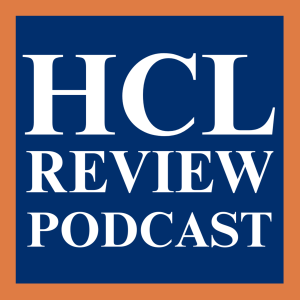Episodes

Wednesday Nov 20, 2024
Wednesday Nov 20, 2024
Abstract: The notion that leaders must sacrifice personal life to achieve greatness is outdated, as recent research shows it's possible to have a successful career and fulfilled life concurrently. The key is for leaders to reframe their mindsets, redefine success beyond just work accomplishments, and make intentional choices to integrate work and personal priorities. This involves cultivating a "growth mindset" that sees work-life balance as attainable, implementing strategies to thoughtfully blend priorities, and influencing organizational cultures to support distributed, flexible leadership models that empower sustainable success and well-being. With the right approaches leveraging insights from research, leaders at all levels can achieve both impactful results and holistic fulfillment, disproving the myth that great leadership necessitates burnout.

Wednesday Nov 20, 2024
Wednesday Nov 20, 2024
Abstract: This article explores the growing importance of the "skill-ready" mindset in today's dynamic business landscape. Drawing on the author's experience in consulting and academic research, the brief outlines the key tenets of the skill-ready mindset, including skill-based talent management, continuous learning and upskilling, adaptability and agility, and collaborative cross-functional teamwork. The article provides practical applications and industry examples from the retail, technology, healthcare, and financial services sectors, demonstrating how organizations can successfully implement a skill-ready approach to talent management. The paper also discusses key considerations for implementing the skill-ready mindset, such as skill mapping, learning and development initiatives, performance management, organizational culture, and leveraging external talent sources. The conclusion underscores the transformative impact of the skill-ready mindset and its importance in navigating the evolving talent landscape to drive long-term organizational success and growth.

Tuesday Nov 19, 2024
Tuesday Nov 19, 2024
Abstract: This article discusses the importance of fostering a culture of vulnerability in organizations in order to improve performance and innovation. It explores the research showing that psychological safety, where employees feel comfortable taking risks and admitting weaknesses, leads to better teamwork, problem-solving and learning. While research demonstrates the benefits of vulnerability, most companies still struggle to create truly psychologically safe cultures. The article then provides practical recommendations for leadership to cultivate vulnerability based on real-world company examples. These include leaders modeling vulnerability, defining clear expectations for respectful engagement, aligning rewards and accountability to encourage risk-taking, and establishing ongoing processes like workshops and reviews that support development from failures and critique. By consciously shaping behaviors, systems and development opportunities, the article argues leaders can embed vulnerability into the culture in a way that transforms how their organization learns, improves and competes over the long-run.

Tuesday Nov 19, 2024
Tuesday Nov 19, 2024
Abstract: This article provides research-backed strategies for addressing the challenges of working under a passive-aggressive boss. Passive-aggressive behavior, marked by indirect expression of negative feelings, can undermine team dynamics, create unclear expectations, stall progress, and breed a toxic work culture. The article recommends proactive approaches grounded in leadership research, including setting clear expectations, directly confronting indirect behaviors, documenting patterns over time, adapting one's own leadership style, and seeking mediation when necessary. By understanding passive-aggression and taking constructive steps, employees can work to establish a more transparent, healthier work environment despite the difficulties posed by an indirectly confrontational supervisor.

Tuesday Nov 19, 2024
Tuesday Nov 19, 2024
Abstract: This article explores a roadmap for building expertise in a new field, drawing on both scholarly research and practical industry examples. The brief begins by emphasizing the importance of assessing one's motivations and available resources, highlighting the key role of intrinsic motivation and access to relevant knowledge and experiences. It then outlines a systematic approach to immersing oneself in the new field through deliberate learning and active engagement, followed by the development of specialized skills and knowledge. The article also underscores the value of gaining practical experience and building a professional portfolio to showcase one's expertise. Finally, it emphasizes the crucial role of feedback, reflection, and a growth mindset in driving continuous improvement. The article is grounded in the work of leading researchers in the areas of expertise development, adult learning, and reflective practice, and features case studies illustrating the successful application of these principles across various industries and career transitions.

Monday Nov 18, 2024
Monday Nov 18, 2024
Abstract: The world of work has undergone seismic shifts in recent years, driven by rapid technological advances, changing workforce demographics, and the lasting impacts of the global pandemic. As organizations navigate this new landscape, effective leadership has never been more critical. In 2024, the Human Capital Leadership Review published a comprehensive body of research exploring the evolving role of leaders in driving organizational success and empowering their people. This article synthesizes the key themes and practical insights from Westover's articles published over the course of the year. It examines critical areas such as:
Cultivating a healthy organizational culture and values alignment
Developing essential leadership competencies for the 21st century
Strategies for enhancing employee engagement, wellbeing, and retention
Leveraging emerging technologies like AI to transform HR and talent management
Navigating workplace challenges like conflict, burnout, and constant change
By distilling this multifaceted research, this comprehensive overview offers a road map for leaders seeking to future-proof their organizations and bring out the best in their people. The article concludes by outlining a holistic framework for leading with humanity, empathy, and a focus on sustainable, long-term success.

Monday Nov 18, 2024
Monday Nov 18, 2024
Abstract: This article makes a compelling business case for organizations to prioritize addressing and preventing employee burnout, which has traditionally been viewed solely as a health issue. It outlines the significant "hidden costs" of burnout that directly impact the bottom line, including presenteeism, increased healthcare expenses, and reduced productivity and performance. The paper then discusses how investing in employee well-being programs can yield measurable financial benefits such as higher productivity, lower turnover, and better customer satisfaction. To build the business case, leaders are encouraged to quantify these gains using organizational data, and to implement specific practices like developing a formal wellness strategy, empowering managers, and modeling healthy behaviors from the top. By recognizing employee well-being as a strategic priority, organizations can mitigate the heavy financial toll of burnout and unlock human potential for long-term success.

Monday Nov 18, 2024
Monday Nov 18, 2024
Abstract: High-performing employees are often overlooked when it comes to providing regular, constructive feedback. However, research shows that feedback is crucial for driving the performance of top talent. This article explores the science behind the importance of feedback for high performers, who have a deep hunger for growth, development, and continuous improvement. Drawing on key theories and empirical studies, the article outlines four practical strategies for leveraging feedback to unlock the full potential of exceptional employees: 1) establishing regular feedback touchpoints, 2) tailoring feedback to individual needs, 3) emphasizing actionable feedback, and 4) fostering a culture of feedback. By implementing these research-backed approaches, organizations can retain their top talent, drive exceptional performance, and position themselves for long-term success. The brief concludes by underscoring the importance of a tailored, collaborative feedback process that recognizes the unique motivations of high performers.

Sunday Nov 17, 2024
Sunday Nov 17, 2024
Abstract: This article examines research-backed signs of incompetent leadership in organizations. It outlines key issues such as lack of vision and strategy, poor communication, deficient management skills, prioritizing self-interest over the group, weak interpersonal abilities, and a lack of openness to learning and growth. Examples are provided to illustrate these leadership shortcomings, which can undermine employee morale, productivity, and organizational culture. The article argues that early recognition of these warning signs allows for addressing problems constructively before serious damage occurs. Developing competent leadership through self-reflection, feedback, coaching, and ongoing development is vital for organizations to achieve their goals and maintain a healthy, high-performing work environment. By understanding these common signs of poor leadership, practitioners can work to cultivate stronger leadership that serves the broader mission and stakeholders.

Sunday Nov 17, 2024
Sunday Nov 17, 2024
Abstract: The evolving nature of work in the 21st century has brought about significant changes in the relationship between employers and employees, with globalization, technological advancements, and economic uncertainties disrupting traditional career paths and placing new demands on organizations and their workforce. Lacking adequate job flexibility or security can have detrimental effects on employee well-being, leading to higher rates of depression, anxiety, stress, and burnout, as well as physical and social strains that spill over into non-work domains. However, research has demonstrated that by adopting flexible work policies, such as flexitime, compressed workweeks, remote work, and paid leave, and ensuring job and financial security through measures like living wages, retirement plans, and just-cause termination policies, organizations can foster greater employee well-being and engagement, which in turn benefits business performance and the ability to attract and retain top talent. Underpinning these efforts is the crucial role of a culture of trust between managers and workers, characterized by open communication, collaborative problem-solving, and fair, individualized consideration of employee needs and contributions. By championing these research-backed strategies at the leadership level, organizations can create a work environment that supports the evolving demands and whole-person well-being of the modern workforce.







